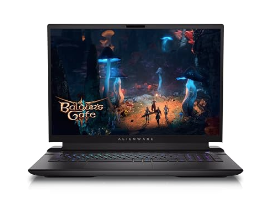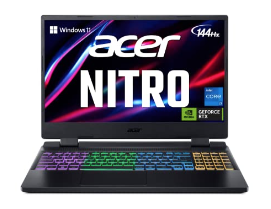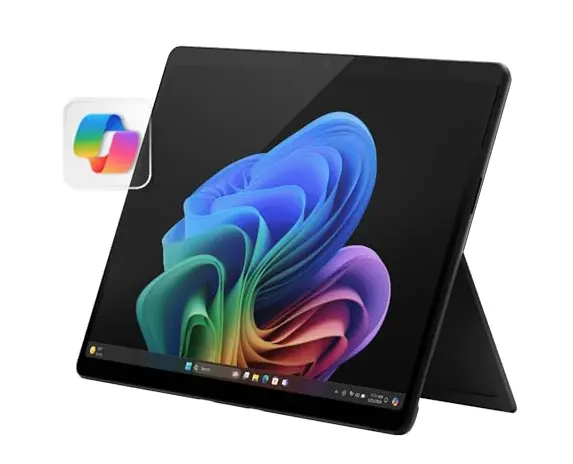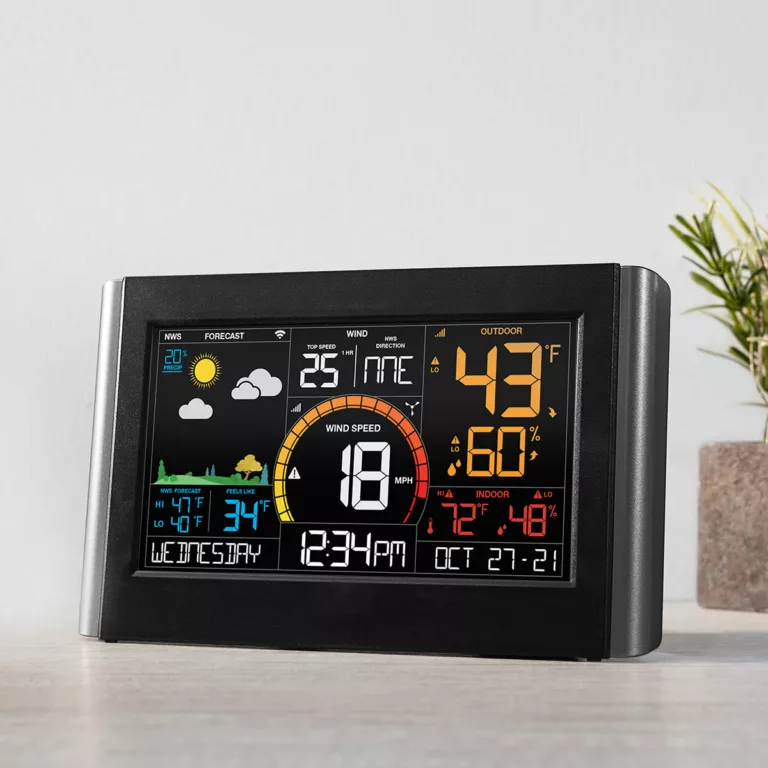Unveiling The Mystery: Why Are Gaming Laptops So Expensive? [2024 Guide]
Have you ever wondered why gaming laptops come with a hefty price tag? Gaming enthusiasts often find themselves pondering over the question: “Why are gaming laptops so expensive?” Gaming laptops are designed to deliver top-notch performance and cutting-edge graphics to meet the demands of modern video games.
The price of gaming laptops can be attributed to several factors. One significant reason is the high-performance hardware components they house. From advanced graphics cards to powerful processors and ample RAM, gaming laptops are equipped with state-of-the-art technology to ensure smooth gameplay and immersive visuals.

Additionally, the compact and portable nature of gaming laptops adds to their cost. Manufacturers have to optimize cooling systems and design sleek chassis without compromising on performance, driving up the overall price of these devices.
Moreover, the demand for gaming laptops with competitive specifications contributes to their pricing. As gamers seek faster refresh rates, higher resolutions, and seamless multitasking capabilities, manufacturers invest in premium components to meet these expectations, resulting in a higher price point.
Understanding the intricate balance between performance, design, and portability sheds light on the underlying reasons why gaming laptops are positioned at a premium price range. In the competitive landscape of gaming technology, investing in a quality gaming laptop ensures an unparalleled gaming experience that justifies its cost.
Performance and Hardware Components
When it comes to understanding why gaming laptops come with a hefty price tag, delving into the realm of performance and hardware components sheds light on the intricacies that make these devices stand out. Let’s explore the key elements that contribute to the high performance of gaming laptops: the Graphics Processing Unit (GPU), Central Processing Unit (CPU), and RAM and Storage.
Graphics Processing Unit (GPU)
The GPU is the powerhouse behind rendering stunning visuals and complex graphics in games. Gaming laptops demand a dedicated GPU to handle the extensive processing required for high-quality gaming experiences. These GPUs are often top-of-the-line models from manufacturers like NVIDIA and AMD, known for their cutting-edge technology and performance capabilities. The demand for high-performing GPUs in gaming laptops directly impacts their overall cost, as investing in a powerful GPU significantly enhances the gaming experience.
Central Processing Unit (CPU)
The CPU acts as the brain of the gaming laptop, executing instructions and calculations necessary for smooth gameplay. In the world of gaming, a robust CPU ensures that games run seamlessly without lags or hiccups. Gaming laptops are equipped with high-performance CPUs, such as Intel Core i7 or AMD Ryzen processors, known for their multitasking abilities and clock speeds. The cost of incorporating these advanced CPUs into gaming laptops contributes to their overall pricing.
RAM and Storage
RAM plays a crucial role in providing temporary storage for data that the CPU needs to access quickly during gameplay. Gaming laptops feature ample RAM, typically ranging from 8GB to 16GB or higher, to support multitasking and swift game loading times. Additionally, storage capacity is vital for storing game files, applications, and media. Gaming laptops often boast SSDs (Solid State Drives) for faster boot times and data access, although SSDs can be more expensive than traditional HDDs (Hard Disk Drives).
In the realm of gaming laptops, the performance and hardware components play a vital role in delivering an immersive gaming experience. The utilization of high-end GPUs, powerful CPUs, and ample RAM and storage contributes to the overall cost of these devices. Understanding the significance of these components provides insight into why gaming laptops are often priced higher compared to standard laptops.
Photo by Pok Rie

Design and Build Quality
When we delve into the realm of gaming laptops, one of the key factors that significantly impacts their price points is the meticulous attention paid to design and build quality. Let’s explore how the design and build quality of gaming laptops justify their higher costs.
Specialized Cooling Systems
Gaming laptops are equipped with specialized cooling systems that are engineered to handle the intense heat generated by high-performance components such as powerful processors and graphics cards. These cooling solutions often involve advanced technologies like vapor chambers, heat pipes, and multiple fans. The intricate design of these cooling systems ensures optimal performance and prevents overheating during extended gaming sessions, ultimately contributing to the overall cost of the laptop.
Premium Materials and Aesthetics
In the world of gaming laptops, aesthetics play a vital role. Manufacturers often use premium materials such as aluminum alloys, carbon fiber, and high-quality plastics to construct laptops that are not only durable but also visually appealing. The attention to detail in the design, including RGB lighting, sleek finishes, and customizable elements, adds to the overall aesthetic appeal of gaming laptops. These premium materials and intricate designs elevate the user experience but also add to the manufacturing expenses, thereby reflecting in the final retail price of the device.
The combination of specialized cooling systems and premium materials not only enhances the performance and durability of gaming laptops but also elevates the overall user experience. As a result, the intricate design and high build quality of these laptops justify their premium pricing in the competitive gaming market.
Photo by Antoni Shkraba
Portability and Form Factor
When it comes to gaming laptops, portability and form factor are crucial factors that influence their pricing. Let’s delve into how these aspects impact the cost of gaming laptops.
Compact Components and Battery Life
One of the reasons gaming laptops are expensive is the need for compact components. To keep the laptop lightweight and portable, manufacturers have to use specialized, smaller-sized components that are often pricier than traditional PC parts. These compact components need to be powerful to handle the demands of modern games, which adds to their cost. Additionally, ensuring a balance between performance and battery life in a portable gaming laptop requires advanced engineering and high-quality batteries, further contributing to the overall price tag.
High-Resolution Displays
Another factor that contributes to the cost of gaming laptops is the inclusion of high-resolution displays. Gamers often prefer laptops with crisp, clear screens that can enhance their gaming experience. High-resolution displays with features like high refresh rates and vibrant color accuracy are more expensive to produce and integrate into a laptop. The demand for immersive gaming visuals has led manufacturers to prioritize quality displays in gaming laptops, even though they come at a higher cost.
In essence, the emphasis on portability and form factor drives up the prices of gaming laptops as manufacturers invest in advanced technology and premium components to deliver a gaming experience that is both powerful and portable.
Photo by Karolina Grabowska

Brand Reputation and Marketing
When it comes to the premium pricing of gaming laptops, brand reputation and marketing strategies play a significant role. Let’s delve into how brand perception and exclusive features influence the pricing structure of gaming laptops.
R&D Investment and Brand Perception
Gaming laptop brands often invest heavily in research and development (R&D) to create cutting-edge technologies and innovative designs. These investments contribute to enhancing brand perception among consumers. Companies like Razer, Alienware, and ASUS have built a reputation for pushing the boundaries of gaming laptop performance through their continuous R&D efforts.
By investing in R&D, gaming laptop manufacturers can introduce new features, improve product durability, and optimize performance, thereby positioning their brands as industry leaders. This commitment to innovation not only drives up production costs but also elevates the perceived value of the products in the eyes of consumers, leading to higher price points.
Exclusive Features and Partnerships
Another factor that influences the pricing of gaming laptops is the inclusion of exclusive features and partnerships. Brands often collaborate with renowned gaming peripherals manufacturers, such as Nvidia and AMD, to integrate cutting-edge graphics cards and processors into their laptops. These exclusive components can significantly enhance the gaming experience but come at a premium price.
Moreover, gaming laptop brands differentiate themselves by offering unique features like advanced cooling systems, customizable RGB lighting, high refresh rate displays, and mechanical keyboards. These exclusive features not only attract gaming enthusiasts but also justify the higher price tags attached to these premium laptops.
In the competitive gaming laptop market, brand reputation and marketing strategies are essential for establishing a strong presence and commanding premium prices. By investing in R&D, cultivating brand perception, and incorporating exclusive features, gaming laptop manufacturers can create a compelling value proposition that resonates with avid gamers seeking top-tier performance and design.
Gaming Laptop Demand and Market Trends
The gaming industry has witnessed exponential growth over the past decade, fueled by an increasing number of gamers worldwide seeking immersive and high-quality gaming experiences. This surge in demand for gaming content has had a direct impact on the popularity of gaming laptops, contributing to their rising prices.
| Product Image | Product Name / Primary Rating / Price | Primary Button |
|---|---|---|
|
||
|
||
|
See Our Reviews:
Alienware M18 R2 Gaming Laptop Review
Alienware M18 AMD Gaming Laptop Review
Acer Nitro 5 Gaming Laptop
Growth of the Gaming Industry
The gaming industry has evolved from a niche market to a mainstream form of entertainment, attracting a diverse audience ranging from casual players to professional esports competitors. With the advent of online multiplayer games, virtual reality, and high-definition graphics, the need for powerful gaming devices like laptops has become paramount.
As more game developers push the boundaries of innovation and creativity, players seek devices that can handle the latest titles with ease. This growing demand for gaming laptops has led manufacturers to invest in cutting-edge technology and design, driving up the overall cost of these devices.
Technological Advancements and Pricing Trends
Advancements in technology play a significant role in shaping the pricing trends of gaming laptops. To meet the demands of modern games that require high frame rates and realistic graphics, laptops need powerful processors, high-performance graphics cards, ample RAM, and fast storage solutions.
The constant race to integrate the latest hardware components and optimize performance leads to higher production costs for manufacturers, which are then reflected in the retail prices of gaming laptops. Additionally, factors such as specialized cooling systems, premium displays, and customizable RGB lighting further contribute to the pricing complexity of these devices.
In conclusion, the increasing demand for gaming laptops, driven by the continuous growth of the gaming industry and the need for cutting-edge technology, has resulted in higher prices for these specialized devices. As the gaming landscape continues to evolve, consumers can expect further innovations and enhancements that will shape the market trends and pricing strategy of gaming laptops in the foreseeable future.
Photo by Garrett Morrow

Conclusion
In conclusion, the pricing of gaming laptops can be attributed to a combination of high-end components, specialized features, and market demand. Gaming laptops require powerful processors, dedicated graphics cards, high refresh rate displays, and efficient cooling systems to handle the demands of modern games. The cost of these components, especially top-of-the-line ones, significantly impacts the overall price of the laptop.
Additionally, the design and construction of gaming laptops often involve premium materials and a focus on durability to withstand long gaming sessions and transport. These quality build components contribute to the higher price tag of gaming laptops compared to traditional laptops.
Moreover, the gaming industry is constantly evolving, with new technologies and advancements driving the need for more powerful hardware in gaming laptops. This constant innovation and the race to provide the best gaming experience propel manufacturers to invest in cutting-edge technology, further adding to the cost of these devices.
Furthermore, the niche market for gaming laptops also plays a role in their pricing. As gaming laptops cater to a specific audience looking for high performance and gaming-centric features, manufacturers target this market segment with premium products, reflecting in the pricing strategy.
In essence, the combination of advanced components, specialized design, technological advancements, and target market positioning all contribute to the higher pricing of gaming laptops. Understanding these factors provides insight into why gaming laptops are priced the way they are in the competitive tech market.








![The Ultimate Beginner's Guide To Buying Your First Laptop [2024] 3 Apple Products](https://theproductreviewdude.com/wp-content/uploads/2024/03/macbook-pro-beside-white-ipad.jpg)






